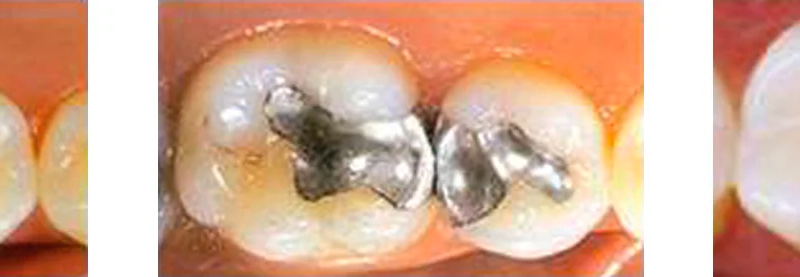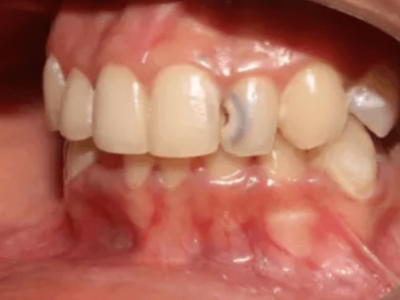An Investigation into Aging and Elastic Modulus
Dental composites have gained popularity over amalgam alloys due to their biocompatibility, non-toxicity, and aesthetic appearance. However, the lifetime of dental composites is limited, and restoration failures can occur due to various factors such as occlusal loading and composite shrinkage. To overcome these challenges, it is important to optimize the dental restoration method, cavity shape, and layered restorations. In this article, we will discuss an investigation into the aging behavior and mechanical properties of three distinct dental filling composites by measuring their elastic modulus as a function of time following polymerization.

Experimental Procedure
The investigation involved conducting nanoindentation experiments using a Hysitron TriboIndenter nanomechanical test instrument on dental composites. Cylindrical holes were drilled into an epoxy resin and subsequently filled with the composite. The filled holes were cross-sectioned and polished, after which nanoindentation measurements were conducted over the cross-section at increasing distances from the irradiated surface. A diamond Berkovich probe was used to conduct load-controlled quasi-static nanoindentation tests on the samples.
To understand the impact of aging following polymerization on elastic modulus, nanoindentation tests were performed at four different intervals: 1 hour, 1 day, 1 week, and 1 month following UV light exposure. The specimens were stored in the dark and immersed in a physiological solution at 37°C to replicate real-world conditions.
Results
The results of both the depth profile and aging studies for all three samples of dental composites indicated a significant increase in modulus at the end of the first week. Sample 1 increased from 11.9±0.2 gigapascals to 14.2±0.9 gigapascals, Sample 2 increased from 13.1±0.8 gigapascals to 17.6±0.8 gigapascals, and Sample 3 increased from 5.8±0.2 gigapascals to 7.8±0.3 gigapascals.
A decrease in modulus was observed for Sample 1 and Sample 2 following one month, with Sample 1 decreasing to 10.8±1.7 gigapascals, and Sample 2 to 12.5±0.3 gigapascals. The modulus of Sample 3 stayed practically unchanged, with a statistically non-significant increase. The results demonstrate that the elastic modulus of dental composites varies significantly with time.
The results also showed a dependence of elastic modulus on the depth of UV light absorption. All three samples reached 50-60% of the maximum value at a depth of 3.5 millimeters. The polymerization depth that is ensured by the producer can be confirmed by the acquired results.
Conclusions
The investigation into the aging behavior and mechanical properties of dental composites revealed that the elastic modulus of these materials varies significantly with time. Aging time significantly impacts the development of the elastic modulus of restoration composites, which could result from the setting reaction between the filling particles and polymer matrix following polymerization.
Furthermore, the modulus of elasticity is reliant on the curing light intensity, i.e., on the depth of light absorbance. A minimal decrease of modulus is seen for the depth up to 1.5 millimeters, whereas a more significant decrease is observed for the depth range from 1.5 to 3.5 millimeters.
The study highlights the importance of optimizing layered restorations and the cavity shape to increase the stiffness of the whole filling. These findings could help dentists in selecting the right composite material and technique for dental restorations, thereby enhancing the performance and extending the lifetime of the restoration.


















Comments